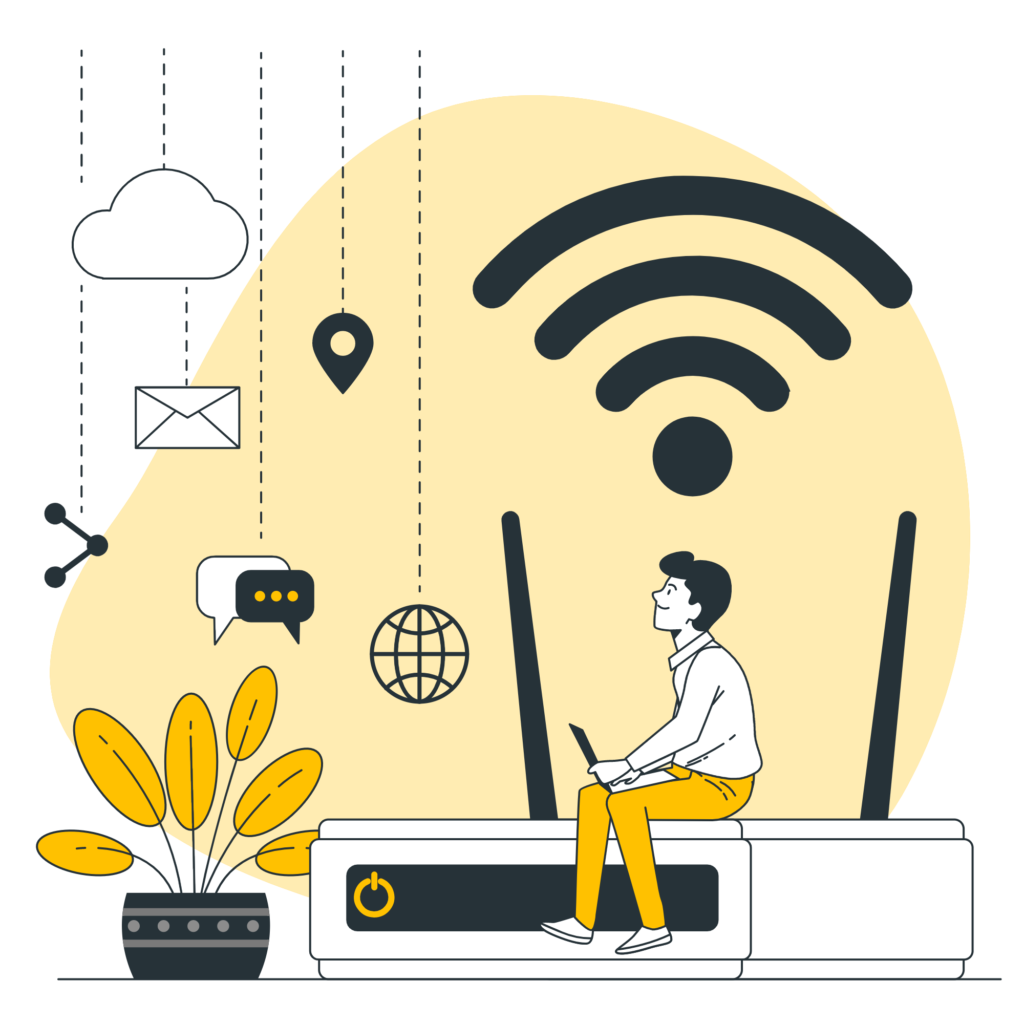Broadband 101: The Dangers of Municipal Broadband
Municipal Broadband - What is it?
Municipal broadband is broadband Internet access owned by public entities. Services are often provided either fully or partially by local governments to residents within certain areas or jurisdictions.
Consumers want access to high speed internet at reasonable prices, but municipal broadband networks won’t get them there. Here is why.
The problem
Through President Joe Biden’s infrastructure package, a historic $65 billion investment has been allocated to bolster broadband throughout the country. It’s important that all consumers have access to high speed internet at reasonable prices, however it is unlikely that this investment will help everyone get connected.
As the broadband investment money begins to trickle to the states, many local governments are eagerly looking at ways to spend it. Unfortunately, many of these localities have been approached by a municipal broadband consultant, pitching them on the fairytale that they could spend the money and provide better service to their consumers by building their own broadband networks. Unfortunately, the municipal broadband network fairytale doesn’t have a happy ending for consumers.
The Reality of Municipal Broadband Networks
The idea of owning a broadband network may sound enticing to local governments, but more often than not it ends up being a very expensive nightmare for the consumers. A study from the Phoenix Center found that average prices are about 13% higher in cities with a municipal provider than in cities without a government-run network. This is likely due to the fact that municipal broadband networks are ineffective but highly subsidized, with network expenses often being covered by higher taxes and even higher utility bills for consumers. Alternatively, when private competition is present in the marketplace, there is a clear incentive for companies to attract consumers by providing quality broadband services at competitive prices.
According to a report from the University of Pennsylvania, of the 20 municipal broadband projects in the U.S. they studied, only two earned enough to cover their project costs during the useful life of the networks, with the other 18 being absolute failures. When a municipal broadband network fails it is the consumers who end up paying the price, not only to get connected to reliable broadband through another service but also to bail out the municipality of its often very expensive loans associated with the failed network.
If your community is considering it’s own municipal broadband network, here are a few key questions to ask local officials:
- What is currently preventing consumers in our area from accessing high-speed internet? How many households are underserved or unserved?
- How is the municipality equipped to compete with private internet service providers?
- Where will funds for the initial investment of the network be coming from?
- How many consumers would need to opt-in to the municipal broadband network for it to be financially viable? What happens if not enough consumers sign up for the municipal broadband services?
- If the municipality starts its own broadband network, who first gets access? If there are unserved or underserved consumers in the area, when should they expect to gain access?
- How will the municipality protect digital privacy and security for its broadband consumers?
If your local officials are unable to answer these questions effectively, then it is likely that the plan is not viable and could be very financially wasteful for your household.
Better Paths Forward
Instead of jumping to building a municipal broadband network, it is crucial to first figure out why consumers in the area are not connected to broadband services in order to best assess which solution will be most practical for your community. (lack of infrastructure, prices too high, unstable homes, prefer mobile network/not have own broadband)
Here are viable solutions to the common obstacles preventing consumers from accessing high speed internet:

If prices seem too high for individual consumers
Digital literacy: education surrounding available programs and subsidies already in existence that aim to connect more consumers.
Government-funded programs:
- Affordable Connectivity Program (ACP): This program subsidizes the cost of monthly high speed-internet service for consumers from over 20 internet service providers.
- FCC’s Lifeline: This program subsidizes either phone or internet bill by $9.25/month for consumers.
Private internet service provider programs:
- Xfinity Internet Essentials: Qualifying households can get internet speeds up to 50 Mbps for $9.95/month which includes in-home WiFi, no contract, and no installation fee for consumers.
- Access from AT&T: Qualifying households can get up to 100 Mbps internet for under $30/month with enrollment into ACP. Benefits of the program. Additionally, an in-home WiFi modem and access to more than 30,000 AT&T nationwide hotspots are also included. include no requirement for a contract, deposit, or installation fee.
- Cox Connect2Compete: Qualifying participants can receive up to 100 Mbps for $9.95/month and a free WiFi modem without the need for a deposit or annual contract.
- Mediacom Connect2Compete: Qualifying households can receive up to 25 Mbps for $9.95/month and a WiFi modem is provided via a no-cost lease without the need for a contract, deposit, installation fees, or equipment rental fees.
- Spectrum Internet Assist: Eligible households can receive Spectrum Internet 100 for $29.99/month for two years, making it free for ACP-qualified consumers. An internet modem is included and there is an option to add in-home WiFi for $5/month.
If there is a lack of infrastructure in the area
Competitive Public/Private Partnerships: encourage formal arrangements between local governments and private internet providers to work together in order to implement effective solutions unique to the community, which could include the use of the Rural Digital Opportunity Fund (RDOF). It’s crucial that any arrangement made allows all companies to compete and that the local government doesn’t play favorites when it comes to technology and providers.
- Create a line extension program: This program would allow the local government to subsidize private internet service providers via grants awarded through a competitive bidding process funded by the Broadband Equity, Access, and Deployment (BEAD) program to build out to the last mile and ensure consumers throughout the entirety of the community have access to broadband service.
Satellite: for some households, utilizing a satellite for broadband connection is a viable option. Although it is important to note that location plays a factor here as heavily forested areas will not be able to maintain a strong or stable connection due to interference. A few popular options include, but are not limited to:
- Starlink offers the fastest residential satellite speeds currently available with up to 250 Mbps and its network is continuing to expand. There is an equipment fee of $599 and service runs at $110/month.
- HughesNet offers a more affordable satellite service as low as $75/month but speeds are at only 25 Mbps and data caps are lower at 30 GB.
- Viasat offers speeds up to 100 Mbps with 300 GB of data but at $200/month. Cheaper options offer 25 Mbps with 65 GB for $60/month


If consumers are moving frequently/not staying in a fixed location
- WiFi Hotspots: allows for connection to WiFi from anywhere and is a great option for consumers who live a more transient lifestyle and do not stay in a fixed location for long periods of time.
- Mobile network: for consumers who live in urban areas, can take advantage of free WiFi services at nearby public locations, and do not want to spend money on their own in-home broadband service.







